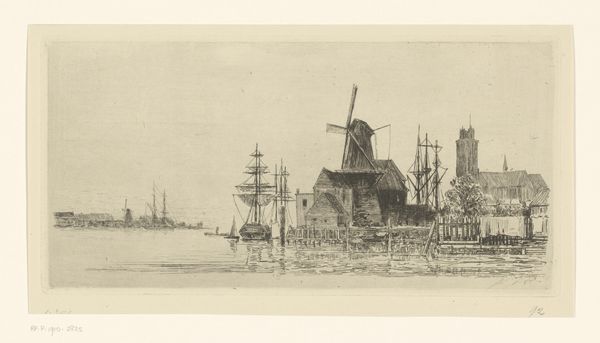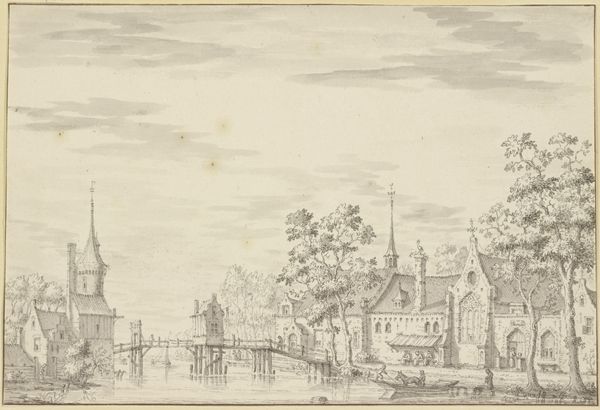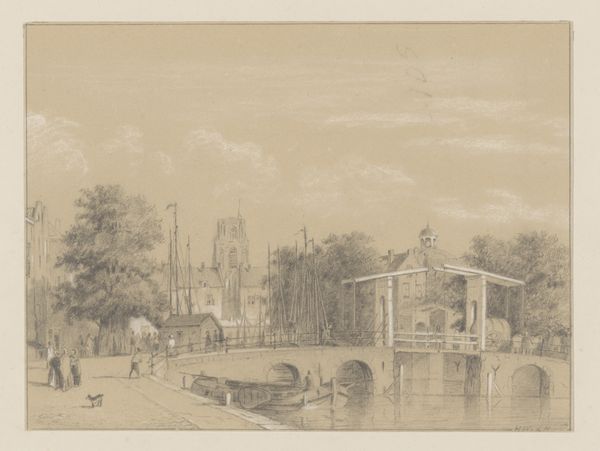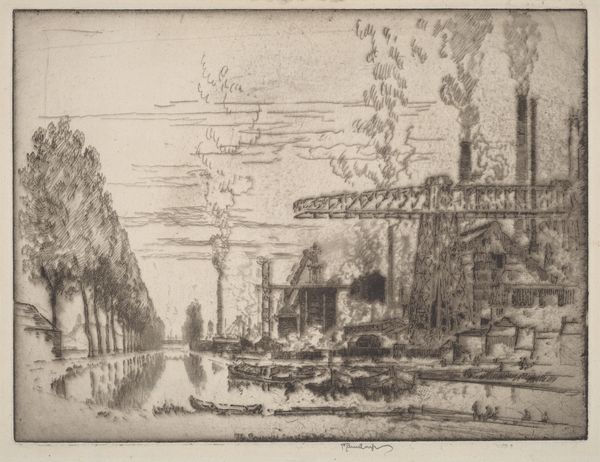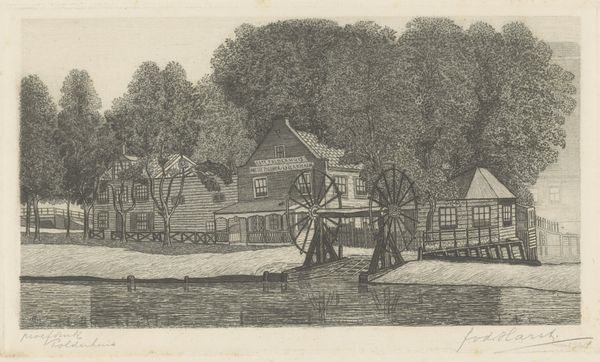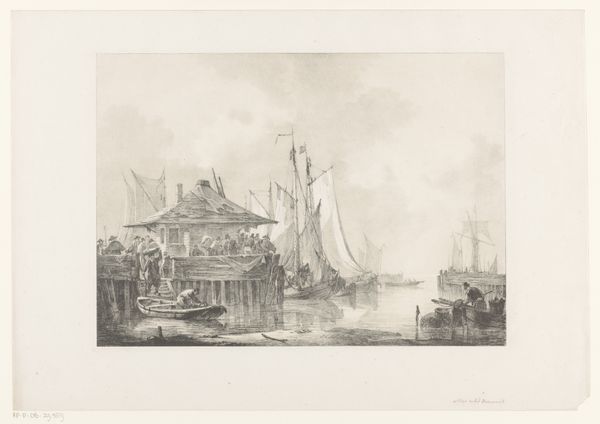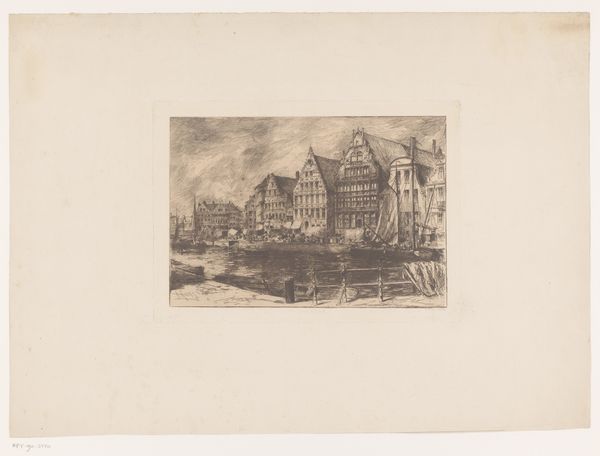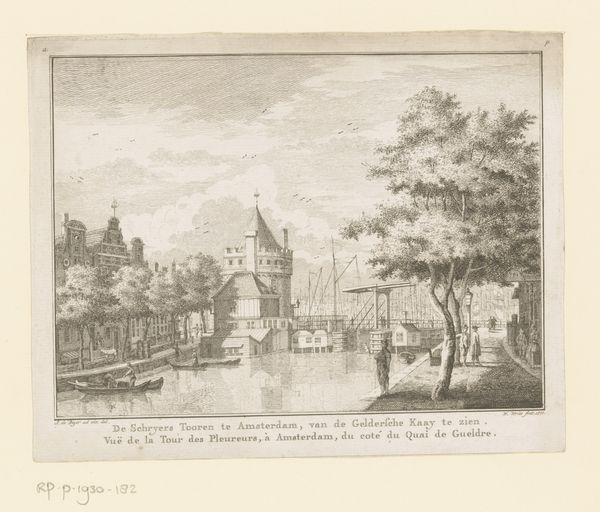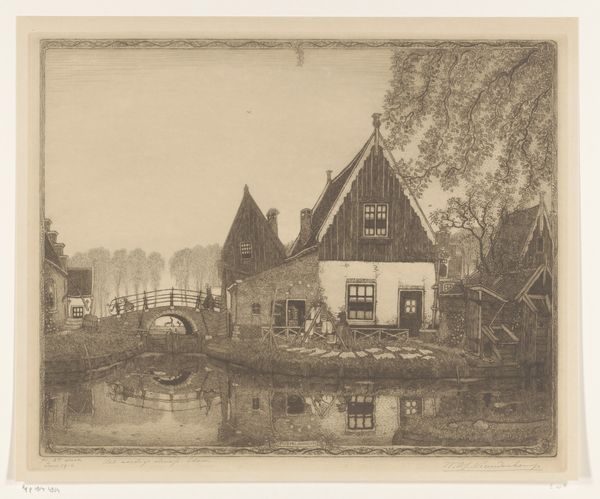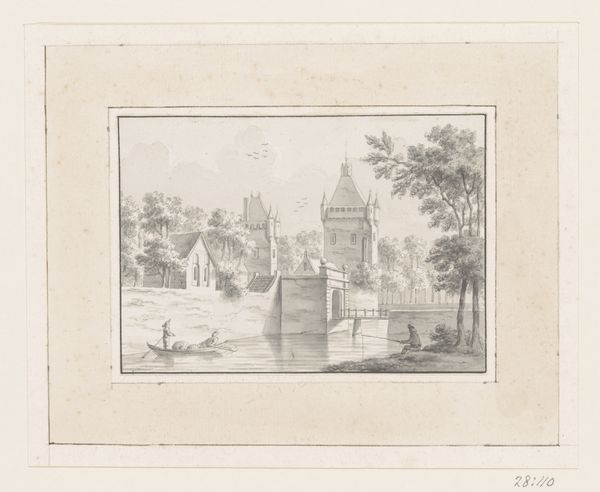
print, engraving
#
dutch-golden-age
# print
#
landscape
#
cityscape
#
engraving
Dimensions: height 180 mm, width 247 mm
Copyright: Rijks Museum: Open Domain
Editor: Here we have a print titled "Gezicht op de Rotterdamse Poort en Ketelpoort te Delft," created sometime between 1829 and 1840. It's a delicate engraving showing a cityscape in a very muted palette. I'm immediately struck by the composition, especially the windmill and the water's reflections. What draws your attention when you look at this piece? Curator: The success of this print relies heavily on its treatment of line and form. Note the intricate details achieved through the precise application of engraving techniques. Observe how the artist meticulously renders textures—the brickwork, the wood, and even the foliage, all through a systematic arrangement of lines. How do you perceive the role of light and shadow in defining the shapes within the composition? Editor: I see that the shadows are used sparingly to give depth to the buildings and the water, but it is a subtle treatment of it. Does the relatively narrow range of tone contribute to the impact of the image in some way? Curator: Precisely. The limited tonal range emphasizes form and pattern over dramatic lighting effects, aligning the work more with a graphic study than a purely pictorial scene. Consider how the rhythmic repetition of vertical and horizontal lines – in the architecture, the bridge, and the reflections – contributes to a sense of order and stability. Is this order characteristic of similar cityscapes, or does it possess a unique aesthetic value here? Editor: I see that sense of order and stability now that you point it out, with the reflections creating another layer of carefully placed lines and forms. I hadn’t considered how that impacted the feel of the work. Curator: And that reflection enhances not only the symmetry, but underscores the tangible reality that this landscape once existed, now captured for eternity. It serves as an invitation to the audience to reflect on the structures within it, and those structures in turn provide the lens for viewing all of life. Editor: That’s a new way of thinking about landscapes. Thanks for sharing!
Comments
No comments
Be the first to comment and join the conversation on the ultimate creative platform.
